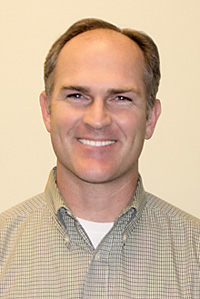ST. LOUIS - The trail that Drive Medical blazed several years ago is widening as manufacturers barge into the market with products that carry low price-points, a high quality promise and a label that says Made in China.
Access Point Medical is the most prominent of these new companies, thanks partly to the fact that their executive team is packed with marquee names in HME manufacturing: Jerry Jones, Tom O'Donnell, Hans Stover and Rick Davis.
In between Medtrade Fall 2005 and Medtrade Spring 2006, the company tripled its portfolio to 119 different products, expanded its sales force to 40 reps, groomed five distribution centers for nationwide DME distribution and set the stage for the kind of development that, to many, looks obvious as HME reimbursement receives one shock after another.
"We now own two factories [in China] which were manufacturing products for U.S. companies, and we are building two more facilities for a respiratory product line and one for our power mobility line," said Andrew (Andy) Jones, vice president of sales at Access Point.
Where China was an option for companies in the past, increasingly the locale looks more and more like a requirement for manufacturers who're trying to combat dwindling reimbursement by putting the squeeze on costs. For Access Point, that means hiring up in China and hiring as little as possible in the States.
"This way we can pass the savings on as low prices to our customers," said Jones.
APM has consolidated its raw materials and components purchasing in China in an attempt to wring yet more savings out of the Far East. Don't look for innovative products from APM, not yet. Piracy is huge issue in China, and can be costly to manufacturers who spend big money on R&D, and then lose that edge to intellectual property thieves.
Moreover, there's some question as to whether innovation is going to be the driver in the HME market that it once was.
"Manufacturers who push high end products into the market with patient targeted activities are hurting the providers if there is no incremental revenue in a third party reimbursement environment," said Jones.
Inogen, Invacare, Sequal and Sunrise Medical - to name a handful - are among those who believe that innovative (and expensive) oxygen solutions are on the up and up, even as reimbursement heads for the basement.
"A higher priced product that provides a better patient outcome and at the same time delivers a total lower cost is sure a heck of a lot better proposition than a lower cost product that requires multiple visits for repair and set up by the provider," said Lou Slangen, senior vice president of worldwide market development at Invacare.
Despite the pricing pressures, these manufacturers believe their marketplace play - high-cost acquisition, low-cost solution - is coming into its own as aging baby boomers demand more sophisticated medical equipment.
"For patients, freedom of choice and quality of life has become more important," said Bob Fary, vice president of sales at Inogen, which manufactures a premium, lightweight oxygen system. " For providers, solutions that assist them in reducing operational costs while allowing them to provide outstanding service to their patients will always have a place in the face of declining reimbursements."




Comments